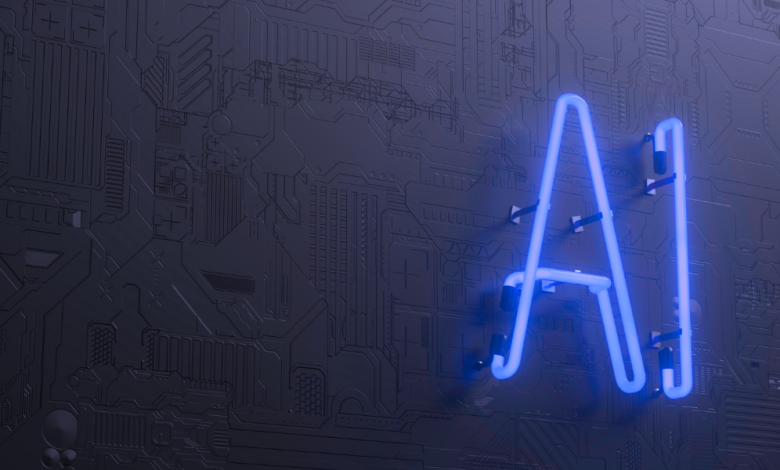
You might have wondered and asked when hearing the famous words of ChatGPT, what does GPT stand for? There’s a long history of technology innovations moving from the super-hyped to the almost invisible general-purpose commodity.
Consider how the steam engine powered manufacturing, or electricity in every home, and how mainframe computers became desktops and then mobile devices. To reach its full potential, Generative Pre-Transformers (GPT) and Generative AI (GenAI) will need to be the next general-purpose technology. That transformation to a general-purpose technology is fueling a new Data Renaissance.
The recent surge of Artificial Intelligence (AI) and GenAI has ushered in what can be aptly described as the Data Renaissance, a period marked by an unprecedented flourish in data utilization, innovation, and a fundamental shift in how we interact with technology. This new era draws uncanny parallels to the historical Renaissance, a time of profound cultural, artistic, and intellectual rebirth that followed the Dark Ages of Europe, where scholars, artists, and thinkers converged to explore new ideas and rediscover ancient knowledge.
Today, we witness a similar convergence around AI, with scientists, technologists, entrepreneurs, and creatives coming together to push the boundaries of what’s possible with data. This Data Renaissance is not defined merely by technological advancements, such as AI, 5G, Cloud Computing, and the Internet of Things (IoT). It highlights a future where data is more abundantly gathered, intelligently processed, and rapidly distributed, revolutionizing how we use data and drive learning and AI inference across all facets of our lives.
We are living in a period where the democratization of data and GenAI tools have become general-purpose technologies that empower the masses, individuals, and organizations to innovate and create value, much like how the printing press in the Renaissance era made knowledge more accessible than ever before.
Generative AI kicks off the 5th wave of Business Intelligence
For the last several decades, data has been out of reach for many. While we’ve experienced bursts of progress, the dream of truly democratized data remained elusive. We can think about the industry evolution in five waves:
- The first wave enabled report developers to create reports without coding in SQL, think of SAP BusinessObjects, and IBM Cognos.
- Then came data visualization, with vendors like Tableau and Microsoft Power BI focused on data analysts’ ability to visualize data locked in spreadsheets, cubes, and data warehouses.
- The third wave introduced augmented analytics with Natural Language Processing (NLP) and automated insights into on-premises data stores and centralized data lakes, pioneered by ThoughtSpot.
- Paving the way for the modern data stack, with players like Mode and Looker leading the integration into cloud data platforms and an entire ecosystem of best-of-breed tools from the modeling and semantic layer with tools like dbt to data cataloging with Atlan and Alation.
- Today, we’re in the fifth wave, the GenAI wave, which has undergone a monumental shift in redefining the BI landscape by incorporating AI-driven analytics into the entire data workflow – an unlock for making self-service analytics a reality.
Whether you’re optimizing supply chains, driving time efficiencies in the field, or building groundbreaking data experiences in your products, AI-powered analytics is making it easy for anyone in a business to ask questions, get answers, and take action.
Consideration for the Future of Generative AI & BI
Executive leaders and data leaders play a pivotal role in implementing AI and GenAI solutions that create value for customers, employees, partners, and stakeholders. As organizations look to differentiate and become AI-powered businesses, they are faced with a fast-moving field and the pressure to move quickly to capture first-mover advantage. The opportunities are real, and so are the risks. Here are a few considerations for you as you start on your AI journey or even evaluate your in-flight journey.
1. Align quick wins with business and digital strategy
New large language models (LLMs) with varying levels of performance and capabilities are being released at break-neck speeds as evidenced by the December 2023 release of OpenAI GPT-4 Turbo and Anthropic Claude 3 release in March 2024.
- Quick wins are usually the way to go when it comes to new implementations, but ensure those quick wins are grouped by business domain and are aligned with your overall business strategy. Thus avoiding accumulating a mix of random AI solutions, creating siloed data, and failing to deliver on promised value.
- Avoid getting stuck in the organizing and planning phase, try to avoid over-indexing on the latest AI releases, and focus on value creation like customer loyalty, operational efficiency, and risk mitigation.
- Think outside the chat box! Start reimagining business processes—across the whole data-to-insight value chain. This may sound contradictory to the quick wins mindset, but it’s a tactic to keep the momentum going on the journey to a larger strategy. Micro-optimizing archaic processes is not a strategy and will not lead to greater value creation.
2. Create value while balancing risk
While organizations are investing heavily into AI initiatives and usage of AI has skyrocketed, mitigating the risks related to AI practices remains underfunded, yet is critical to the success of implementation. A few key areas that businesses must focus on to create real value while balancing risk:
- Be proactive and forward-thinking when it comes to risk mitigation. Revisit cyber-security, regulatory and compliance, and privacy processes concerning AI.
- Incorporate human-in-the-loop mechanisms, which improve accuracy and reliability, ensure ethical and legal compliance, and build trust and transparency. In short, human-in-the-loop is crucial for ensuring safe, reliable, and trustworthy analytics, particularly in mass communications and critical decision-making.
- Create a cross-functional team representing the core enterprise functions, including security, compliance, and line of business leaders. This group should focus on identifying risk mitigation strategies and prioritizing use cases to create business value. This may sound simple, but it is not an easy task.
3. Bridging the skills gap
Reskilling and upskilling are no longer just a response to downsizing or a PR move; it’s a strategic necessity for companies to stay competitive. The demand for AI skills and roles is outpacing the supply of qualified workers. Companies like Amazon, Infosys, and CVS have successfully reskilled large numbers of employees to fill critical roles in cybersecurity, software development, and machine learning by making reskilling a boardroom issue. Here are my takeaways when it comes to bridging the skills gap:
- Effective reskilling requires commitment from all levels of leadership. This is not a challenge simply consigned to HR. Consider the connection between reskilling and the organization’s strategy, and ensure managers understand their role in implementing skills programs.
- Optimize reskill and upskill strategies. This can come in the form of learning management systems or partners. It also comes in the form of utilizing analytics tools that embed seamlessly into workflows with intuitive UX.
- Identifying employees with transferable skills, hidden skills, technical learnability, and hidden knowledge can help fill hard-to-hire positions.
Pulling it all together
Implementing GenAI as a general-purpose technology in the current fast-paced environment may sound daunting, but it is achievable. Take, for instance, Act-On, a leading marketing automation company. Act-On’s mission is to elevate product capabilities and ensure customers can confidently wield data to make strategic decisions. They were able to leverage AI analytics and embedded analytics with Natural Language Search (NLS) to achieve quick wins that aligned with their overall business strategy. Standout highlights from their journey include:
- The implementation was achieved in weeks versus months. It achieved quick wins, increased speed to market, and created value that is aligned with its strategy.
- AI learning coached by Human-in-the-loop and reinforcement learning provides higher quality answers and mitigates risks.
- Natural Language Search helps bridge the skills gaps by enabling more non-technical users to access insights and make critical decisions, driving high adoption rates of their product.
In this new Data Renaissance, the role of GenAI and BI in redefining business processes and decision-making paradigms cannot be overstated. Organizations must remain agile, forward-thinking, and inclusive, recognizing that the future of GenAI and BI is not just about technological advancement. Instead, it’s crafting a future that harmonizes innovation with strategic vision, human talent, and operational excellence. This holistic approach will not only ensure that organizations stay ahead in a competitive landscape, but will also contribute to a future where technology and human ingenuity coalesce to create value for all stakeholders.



